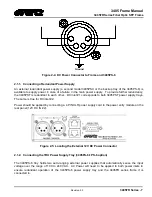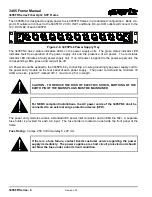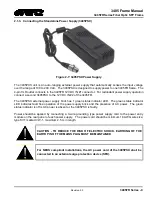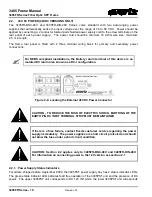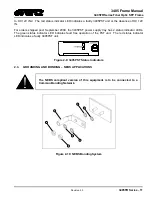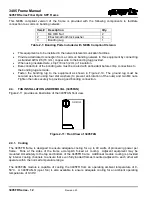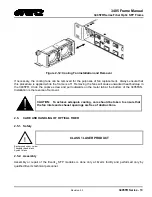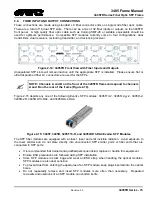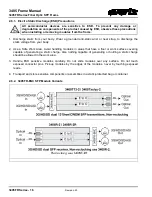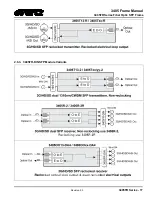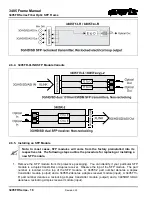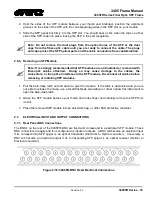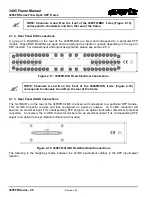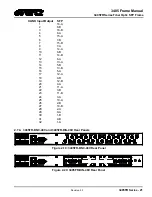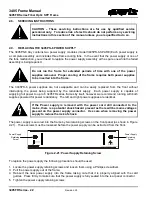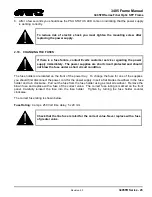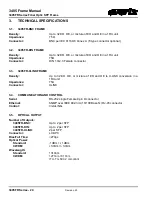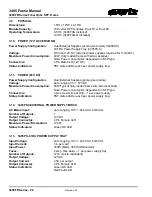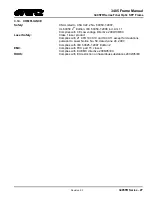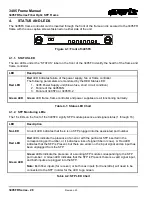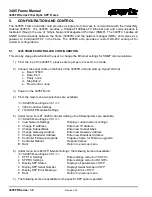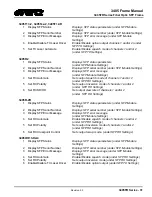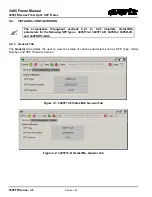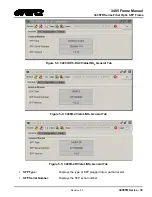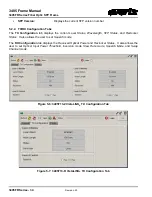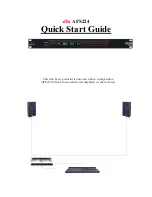
3405 Frame Manual
3405FR Series Fiber Optic SFP Frame
Revision 2.3
3405FR Series - 19
2. Hold the sides of the SFP module between your thumb and forefinger, position the alignment
grooves on the sides of the SFP with the corresponding guides in the SFP slot on your module.
3. Slide the SFP gently but firmly into the SFP slot. You should hear a click when the clips on either
side of the SFP snap into place, locking the SFP in the port receptacle.
Note: Do not remove the dust plugs from the optical bores of the SFP or the dust
caps from the fiber-optic cable until you are ready to connect the cable. The plugs
and caps protect the SFP optical ports and the cable connectors from contamination.
2.6.6. Removing an SFP Module
Note: It is strongly recommended that SFP modules are not installed or removed with
fiber-optic cables attached. Doing so may cause damage to the cables, the
connectors, or the optical interfaces in the SFP module. Disconnect all cables before
removing or installing SFP modules.
1. Pull the bale-clasp latch out and down to eject the module. If the latch is obstructed and you are
not able to release the clasp, use a small flat-blade screwdriver or other narrow flat instrument to
open the bale-clasp latch.
2. Grasp the SFP module between your thumb and index finger and carefully remove the SFP from
its slot.
3. Place the removed SFP module into an anti-static bag, or other ESD protective container.
2.7.
ELECTRICAL INPUT AND OUTPUT CONNECTIONS
2.7.1. Rear Panel BNC Connections
The BNC’s on the rear of the 3405FR-BNC are fixed and correspond to a particular SFP module. These
BNC connectors are agile and thus configured as inputs or outputs. A BNC will become an electrical input
if its corresponding SFP spigot is an optical transmitter (Electrical to Optical converter). Conversely a
BNC will become an electrical output if its corresponding SFP spigot is an optical receiver (Optical to
Electrical converter).
Figure 2-16: 3405FR-BNC Fixed Electrical Connections



